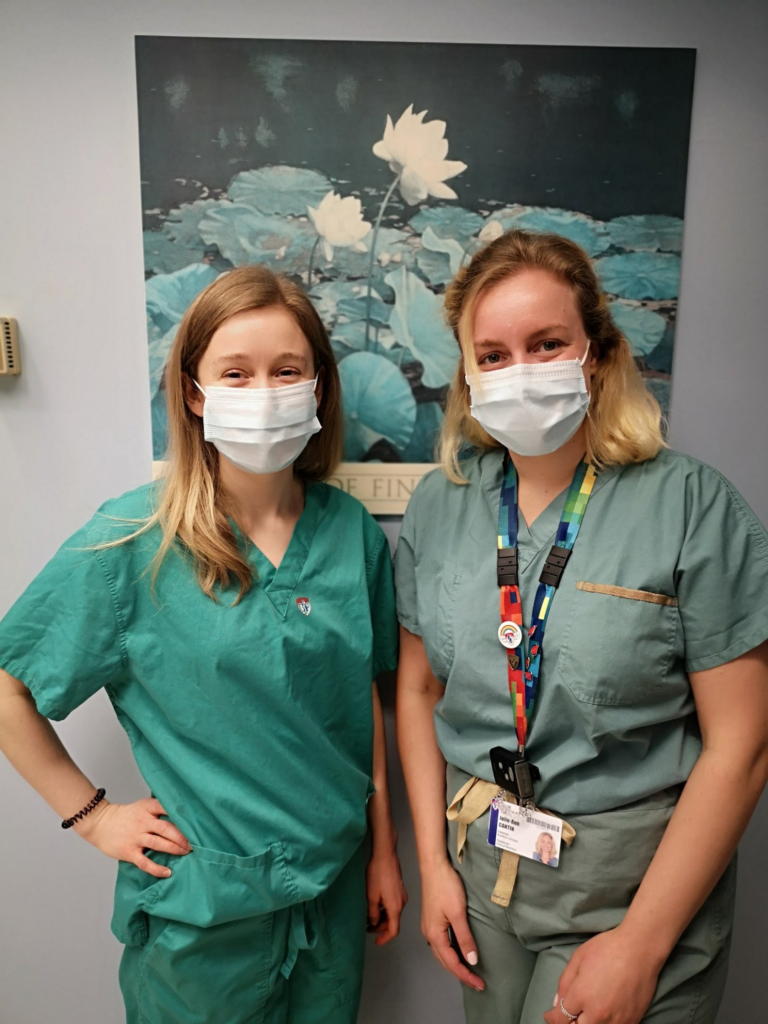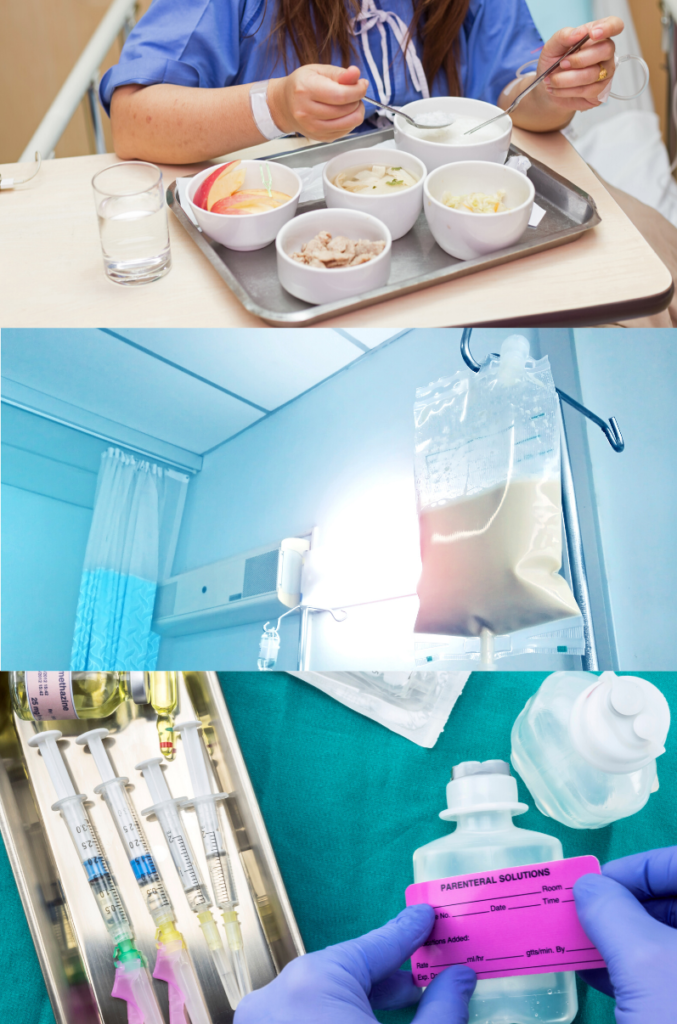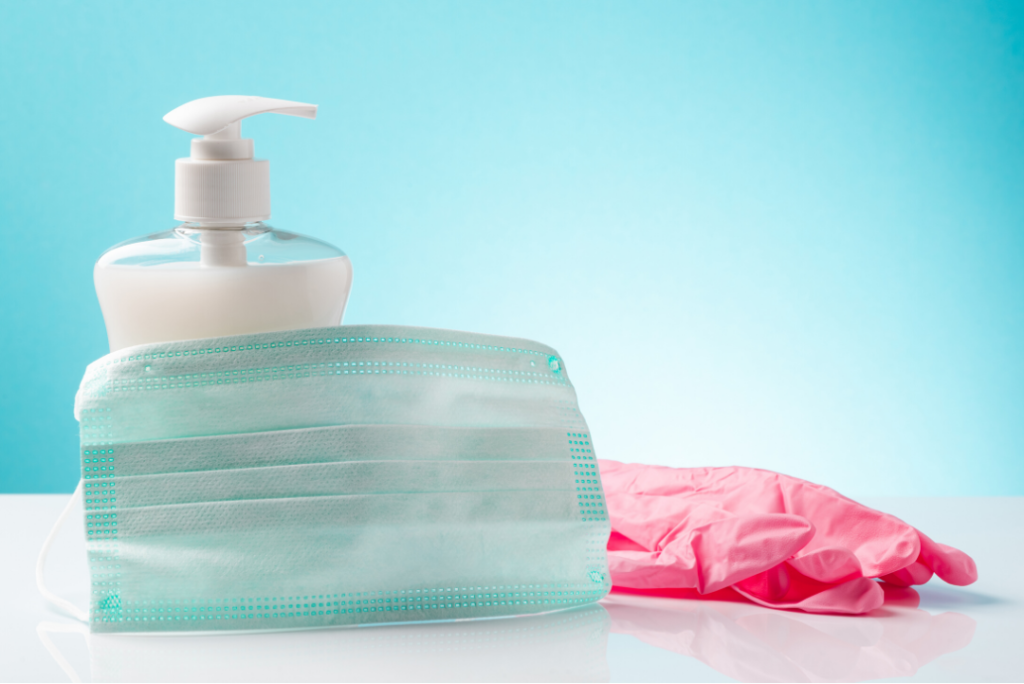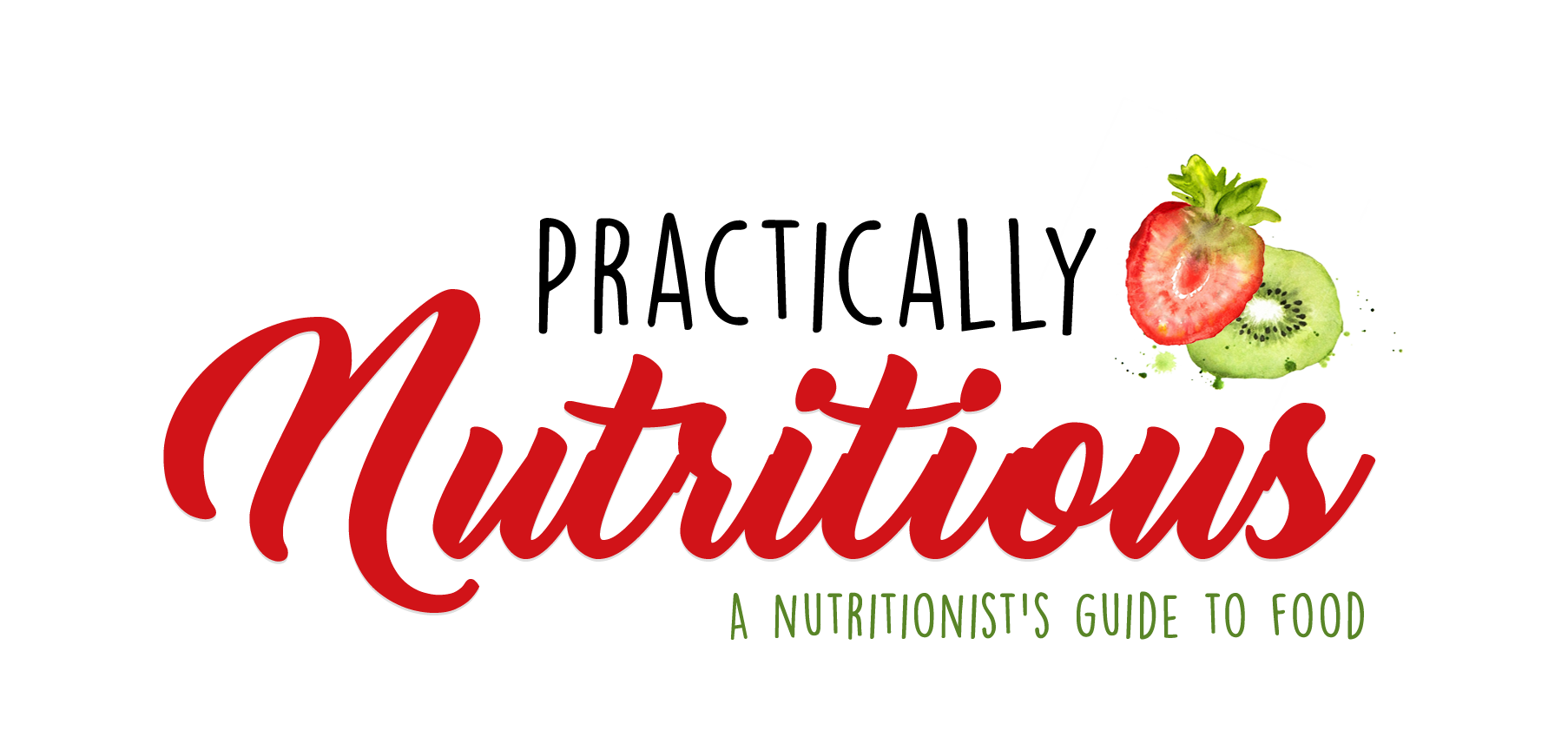Most people are surprised when I tell them dietitians work in hospitals. Even more people are surprised when I say that there are dietitians who work in the Intensive Care Unit (ICU). But yes, it’s true, dietitians do work in the ICU, and during the current COVID-19 crisis, critical care dietitians are more important than ever.
Although we learn the theory behind critical care nutrition in school, I thought it would be best to go straight to the source when writing about this topic. I was extremely lucky to interview two dietitians who work in critical care. I learned a lot about their work and hope to pass on some of that information to you. So, without further ado, let’s meet our interviewees, take a look at what they do, and why their jobs are so important.
What is the ICU?
The ICU is a hospital department for people who are critically ill. Usually, patients who are in the ICU are being treated for life-threatening health issues and often have at least one of their organ systems failing. This means that most of them are intubated, connected to many machines, and require a lot of medical interventions. With the current COVID-19 crisis, ICUs have been in the spotlight as they handle an influx of virus patients, many of whom need respiratory support.
Our interviewees: Brittnee Zwicker & Julie-Ann Cantin
Brittnee Zwicker and Julie-Ann Cantin both work at the Montreal General Hospital, which is part of a larger network of hospitals called the McGill University Health Centre (MUHC). The Montreal General is one of the hospitals in Montreal that is currently receiving and treating COVID-19 patients and has a large ICU, which has been expanded recently from 22 beds to 30 beds.

About Julie-Ann
Julie-Ann started her career as a diet technician in food service management. She gained experience in dietetics through this job, while completing her bachelor’s degree at the University of Montreal. One of her dietetic internship rotations was at the ICU at the Hôpital du Sacré-Cœur in Montreal, and she was hired there after graduation. She switched over to the MUHC network recently and has worked in many different hospital departments, including the ICU. When the COVID-19 crisis began, Julie-Ann was placed as an ICU dietitian at the Montreal General Hospital.
About Brittnee
Brittnee did her undergraduate degree in Nutrition and Dietetics at Acadia University in Nova Scotia. She went on to complete a master’s degree at McGill University, then did a dietetics internship, parts of which were at the MUHC. Once graduated, she was hired by the MUHC and worked in different departments before settling into her current role. Brittnee is part of a team that handles all cases of intravenous feeding (also called parenteral nutrition) in the hospital.
Why nutrition is important for critically ill patients
Dietitians are an incredibly important part of the team of healthcare professionals working in the ICU. This is because critically ill patients often experience the following:
- Increased nutrient needs: critically ill patients experience stress and inflammation. This causes the body to break down important tissues, like muscles, in order to sustain itself. Feeding a sick patient helps slow down this breakdown, although it usually cannot fully stop or reverse it. This means that critically ill patients need extra calories, protein, and other nutrients in order to sustain important tissues and heal.
- Decreased nutrient intake: despite needing MORE nutrients, patients who are critically ill usually eat a lot LESS than usual. This is because they are often sedated and intubated, so they can’t eat on their own. Even if they are conscious, many experience severe symptoms that make it harder for them to eat.
Without nutrition support, critically ill patients could take longer to heal and may experience malnutrition, worse clinical outcomes, and even increased mortality.
What dietitians do in the ICU
The dietitian is the person responsible for making sure critically ill patients receive the nutrients they need. The dietitian screens all patients that come into the ICU within the first 24-48 hours. During screening, the dietitian takes a look at the patient’s history, weight and weight loss, current condition, and other factors, in order to determine what kind of nutrition intervention will work best for them.
There are three main options:

- Feed the patient orally: if the patient is awake and not ventilated 24/7, they can probably be fed by mouth. The dietitian’s job is to make sure that the patient gets food of the right consistency (if they have trouble chewing and swallowing), that they are getting mealtime assistance (if they are having trouble feeding themselves), and that they are eating enough for their needs.
- Tube feeding (enteral nutrition): if the patient can’t eat because they are intubated, sedated, or very ill, tube feeding is the next best option. This is when a tube is passed through the nose or mouth into the patient’s stomach. Then, food in the form of a nutritional formula (a thick liquid) is passed through the tube directly into the digestive system. The dietitian decides what kind of tube feeding formula the patient should receive, how much of it, and how often.
- Intravenous feeding (parenteral nutrition): this option is the last resort for patients who can’t tolerate tube feeding. This could happen because the patient’s digestive system isn’t working like it should. In this case, the patient is given a mixture of all of the nutrients they need through the vein. This isn’t ideal, but it can certainly keep a patient nourished and help with their recovery. As with enteral feeding, the dietitian helps figure out what kind, how much, and how often the formula is given.
Dietitians are part of a team
Keep in mind that no one works in a vacuum, especially not in a hospital. Both Brittnee and Julie-Ann work as part of large multidisciplinary teams, and during our interview they stressed how important these teams are. All dietitians, whether in hospitals or in clinics, work with others. This includes doctors, nurses, pharmacists, and other allied health professionals such as physiotherapists, social workers, and occupational therapists. When making healthcare decisions, all team members are consulted to make sure the patient receives the best care possible.
“You’re always working within an interdisciplinary team in the hospital as a dietitian, whether it’s in a small tight knit group or on a large scale…. we’re very fortunate [at the MUHC] to have really great relationships with a lot of the staff physicians and residents. Nutrition is well-respected so it’s easy for us to have those conversations. I think relationships are key.”
Brittnee Zwicker
How has the ICU changed during the COVID-19 crisis?
The Montreal General Hospital’s ICU has had to adapt to the new influx of COVID-19 patients. In order to keep infection to a minimum, the ICU is now split into a “hot” zone for COVID-19 patients, and a “cold” zone for other patients. Each zone has its own healthcare team, including its own dietitian. Julie-Ann is the dietitian in the “hot” ICU zone, and on a given day, she treats 13-15 patients.

Because they work with COVID-19 patients, Julie-Ann and her team must be very cautious, wear personal protective equipment, and limit contact with their patients. This means that some of the assessments dietitians usually perform cannot be done, and so Julie-Ann gets much of the information she needs from the nurses.
Despite these difficulties, Julie-Ann notes that the changes in the ICU have actually made work more manageable. Before the COVID-19 crisis, there was only one dietitian working in an ICU of 22 beds. Now that the ICU is split between two dietitians, despite having a total of 30 beds, the ratio of patients to dietitians is lower.
“Personally, I feel that we’re able to offer much better care with fewer numbers of patients per dietitian.”
Julie-Ann
And it’s good that this is so, because COVID-19 patients certainly need nutrition support.
Nutrition support for COVID-19 patients
COVID-19 patients who are in the ICU are critically ill, meaning that they experience the same issues as any other critically ill patient. This includes stress and inflammation, loss of muscle mass, increased protein and calorie needs, and reduced food intake. So COVID-19 patients, just like all ICU patients, need a dietitian to make sure they are getting all of the nutrients they need.
Many COVID-19 patients in the ICU are also intubated. This means they can’t eat on their own. In these cases, tube feeding is the way to go, and according to Julie-Ann, the majority of the patients she works with require this option. She makes sure they are receiving all of the nutrition they need through tube feeding. If this fails, the next option is intravenous feeding, and that is when Brittnee’s team gets involved.
The bottom line
Critical care dietitians are an important part of the healthcare team working in the ICU. These dietitians help make sure critically ill patients get the nutrients they need to get better. There are many options for feeding patients in the ICU, and making these technical and personalized decisions is difficult and involves extensive training. When it comes to nutrition support, ICU dietitians are the experts.
So, next time you ask your dietitian friend for a meal plan, consider the other types of expertise he/she may have! We work in a versatile field and are often a crucial part of healthcare teams.
References
- Adhikari, N., Annich, G., del Sorbo, L., Goffi, A., Lapinsky, S.,Maham, N.,Piraino, T., Sharma, S. Kaya, E., Lawler, P., & Sholzberg, M. (2020, June 14). Management Principles of Adult Critically Ill COVID-19 Patients. University of Toronto Interdepartmental Division of Critical Care. https://icu-pandemic.org/COVID19_Management_considerations_latest.pdf.
- Barazzoni, R., Bischoff, S. C., Breda, J., Wickramasinghe, K., Krznaric, Z., Nitzan, D., Pirlich, M., Singer, P., & endorsed by the ESPEN Council (2020). ESPEN expert statements and practical guidance for nutritional management of individuals with SARS-CoV-2 infection. Clinical nutrition (Edinburgh, Scotland), 39(6), 1631–1638. https://doi.org/10.1016/j.clnu.2020.03.022
- Critical Care Services Ontario. (2020, June 11). What is Critical Care? https://www.criticalcareontario.ca/EN/AboutUs/Pages/What-is-Critical-Care.aspx.
- McGill University Health Centre. (2020, June 13). Montreal General Hospital. https://muhc.ca/mgh.
- Preiser, J. C., van Zanten, A. R., Berger, M. M., Biolo, G., Casaer, M. P., Doig, G. S., Griffiths, R. D., Heyland, D. K., Hiesmayr, M., Iapichino, G., Laviano, A., Pichard, C., Singer, P., Van den Berghe, G., Wernerman, J., Wischmeyer, P., & Vincent, J. L. (2015). Metabolic and nutritional support of critically ill patients: consensus and controversies. Critical care (London, England), 19(1), 35. https://doi.org/10.1186/s13054-015-0737-8.
- Thibault, R.& Pichard, C. (2010). Nutrition and clinical outcome in intensive care patients. Current Opinion in Clinical Nutrition and Metabolic Care, 13(2), 177-183. 10.1097/MCO.0b013e32833574b9.
- Wells Mulherin, D., Walker, R., Holcombe, B., Guenter, P., & the ASPEN Clinical Practice Committee. (2020). ASPEN Report on Nutrition Support Practice Processes with COVID-19: The First Response [PDF File]. Retrieved from https://www.nutritioncare.org/uploadedFiles/Documents/Guidelines_and_Clinical_Resources/COVID19/ASPEN%20Clinical%20Report%20on%20Nutrition%20Support%20Practice%20Processes%20with%20COVID-19%205-26-2020.pdf.
